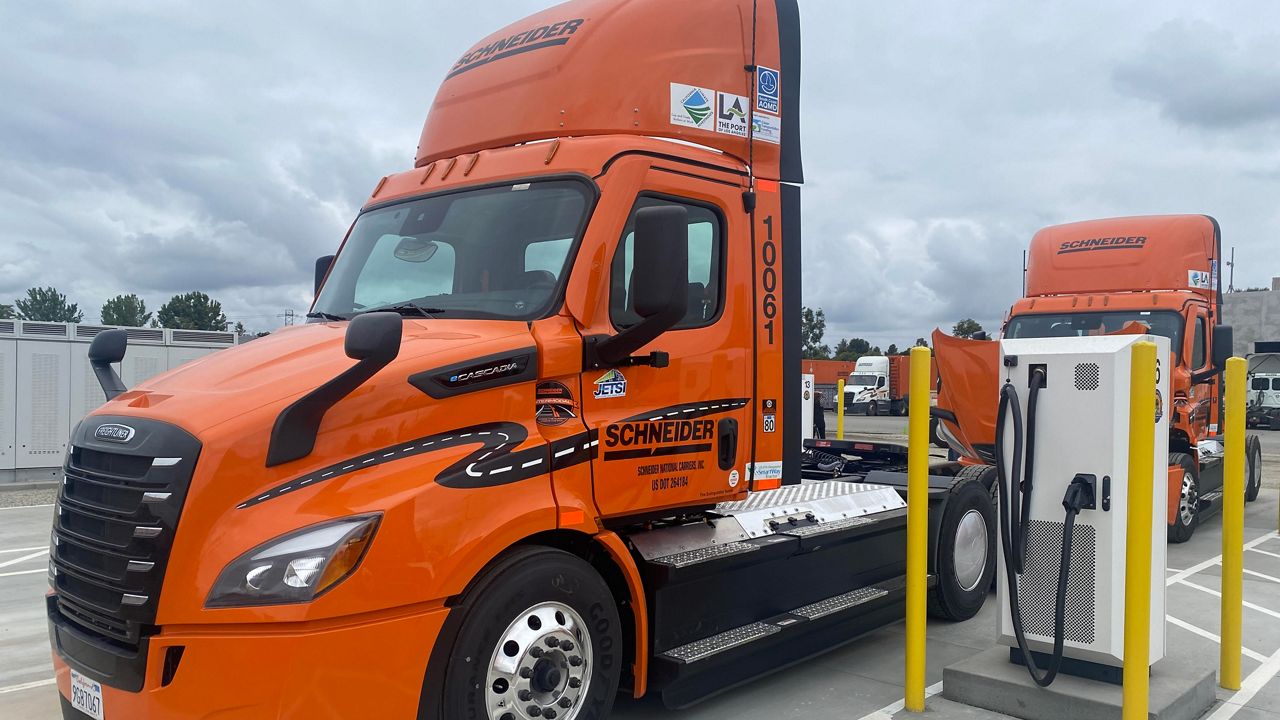EL MONTE, Calif. — One of the country’s largest trucking companies unveiled one of the largest heavy-duty EV charging stations of its kind Wednesday.
On a site the size of a half football field, the Schneider National Operations Center in South El Monte now has 16 heavy-duty chargers capable of charging 32 battery electric trucks at the same time.
“Over 100 years ago, this very site was full of oil derricks,” Schneider Chief Executive and President Mark Rourke said. “As we sit here today, it is now one of the largest battery electric charging locations commercially in the area — a first of its kind.”
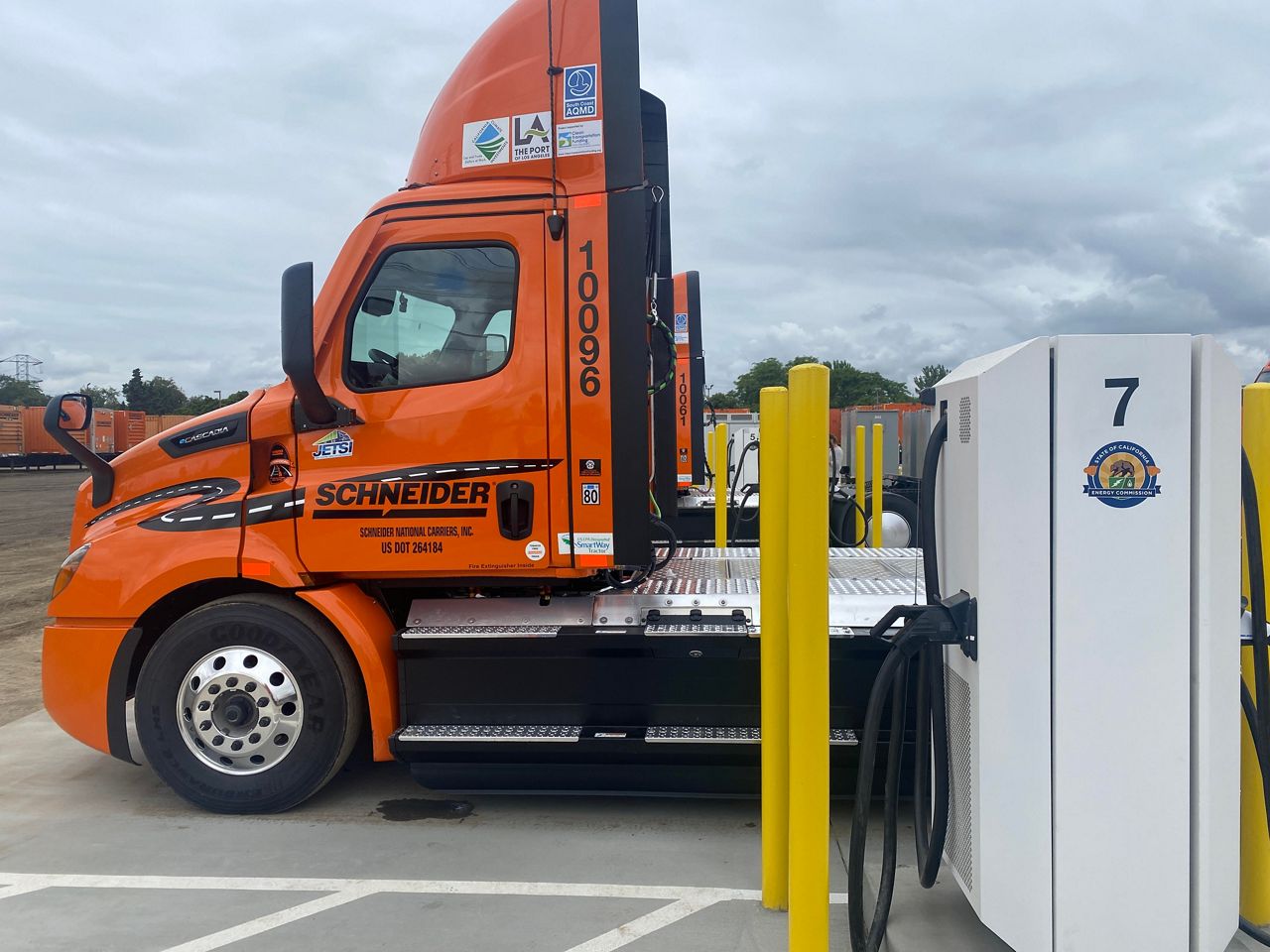
Schneider, based in Green Bay, Wisconsin, has purchased 92 battery electric Freightliner eCascadia trucks.
Made by Daimler Truck North America and able to travel 220 miles on a single charge, Schneider is currently using the trucks to haul deliveries for Frito-Lay North America and Goodyear and is recharging them at the South El Monte depot with dual-cable chargers that can power up a truck in as little as 90 minutes or overnight.
“This is a wonderful example of what public-private partnership and inter-agency coordination can do,” California Air Resources Board Chair Liane Randolph told Spectrum News. Fifty of the electric trucks were funded through the ARB, California Energy Commission and South Coast Air Quality Management District, along with Southern California Edison and the Port of Los Angeles.
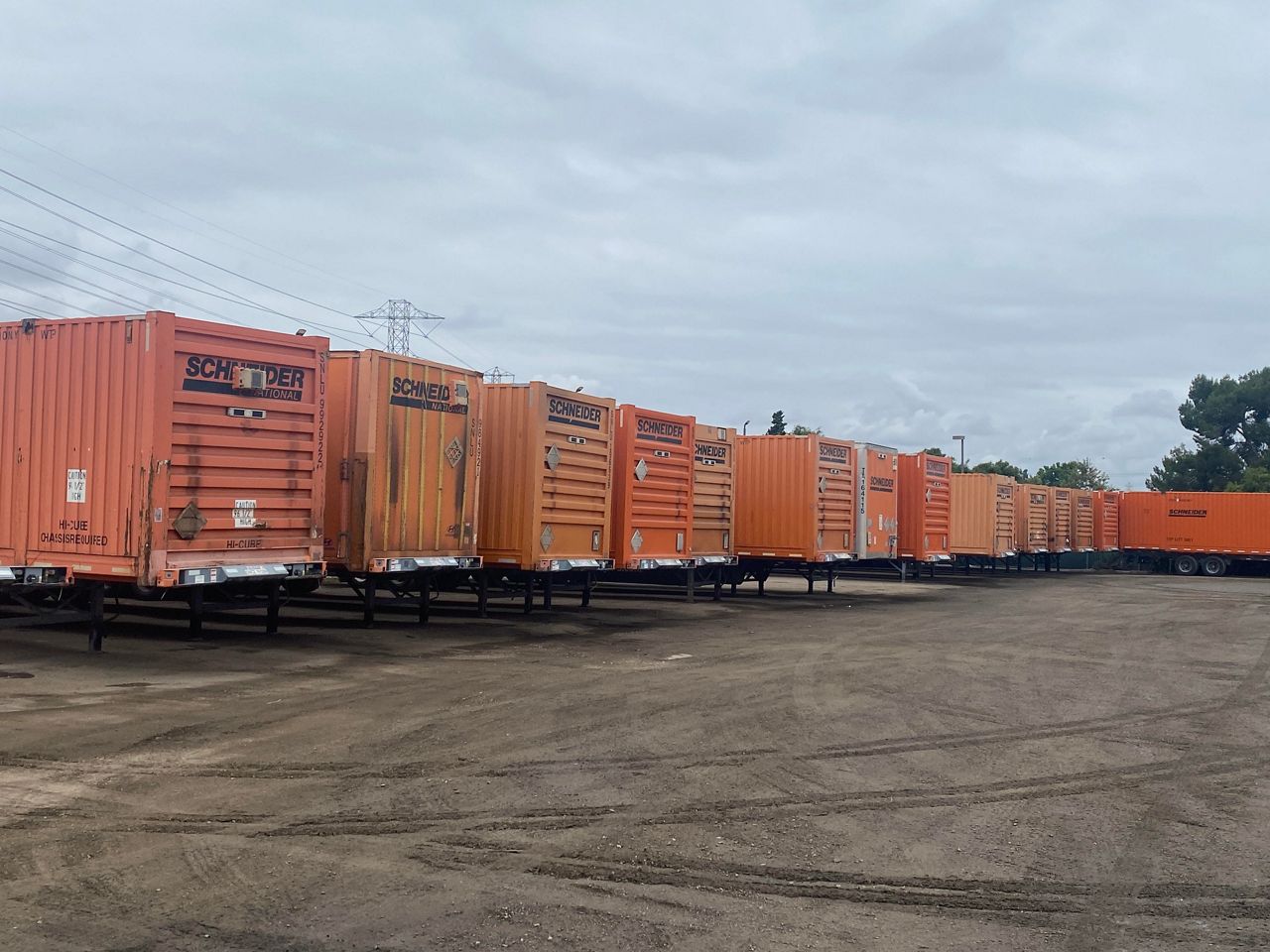
Working as the Joint Electric Truck Scaling Initiative, the group is part of the statewide California Climate Investments initiative that uses cap-and-trade money to reduce greenhouse gas emissions while simultaneously bolstering the economy and improving public health.
JETSI, as it’s known, was established to increase the number of zero-emission heavy-duty trucks as California works toward its goal of requiring heavy-duty truck manufacturers to phase out diesel-powered models by 2036.
“We recognize it’s going to take time to turn over these fleets,” Randolph said. “These trucks last for many years, so there will be some diesel trucks on the road for years to come, but eventually we will get to a zero-emissions truck fleet.”
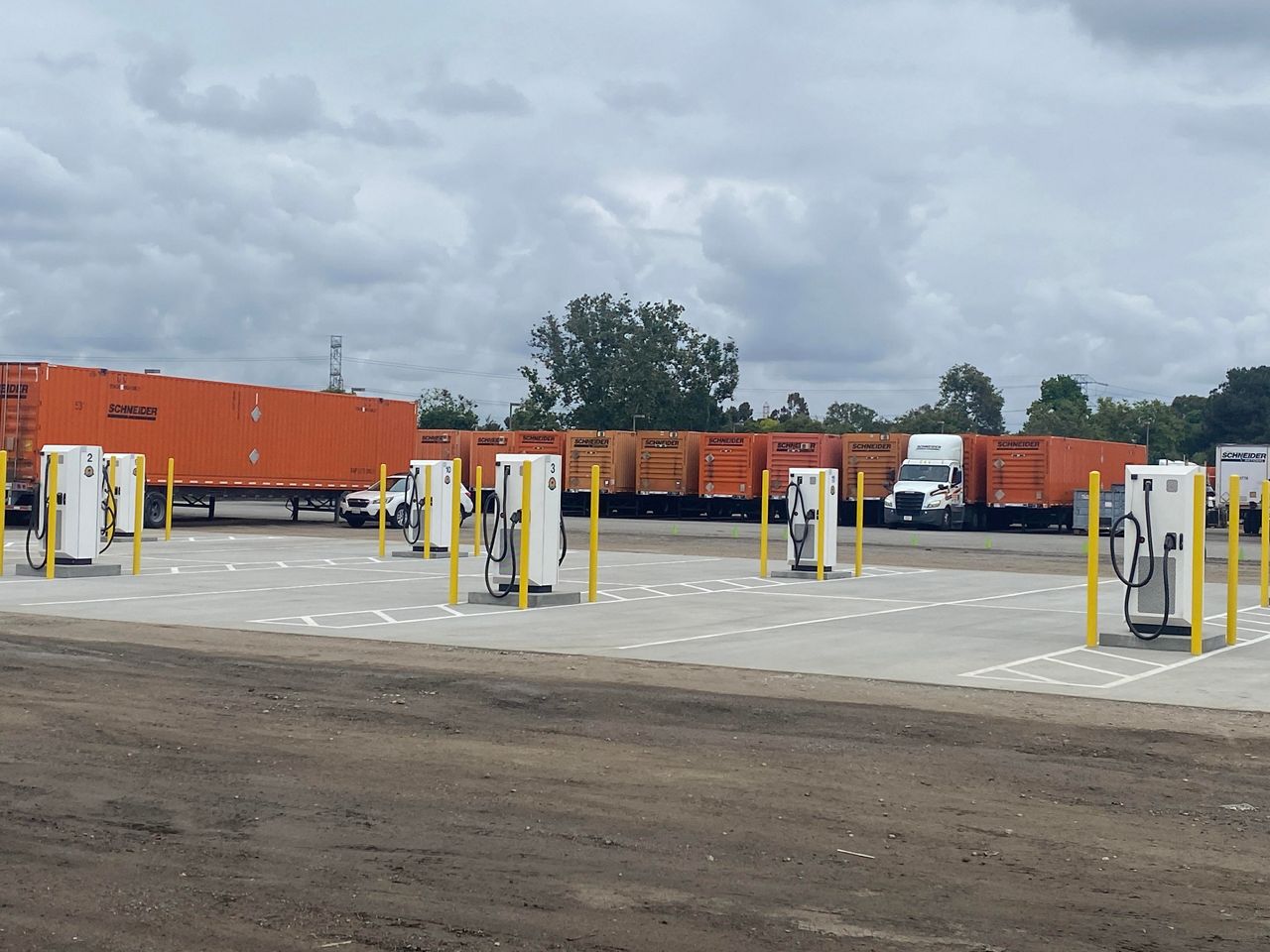
Mobile sources, including trucks, account for 80% of the air pollution in the South Coast Air Quality Management District and 40% of greenhouse gas emissions in the state. Every day, on the 60 freeway alone, half a million vehicles pass by.
“A project like this with 50 heavy-duty electric trucks is a major start,” said South Coast Air Quality Management District Vice Chair Michael Cacciotti.
Once Schneider deploys all 92 eCascadias, they are expected to avoid over 81,000 pounds of carbon dioxide emissions daily — the equivalent of removing 2,400 gas-powered cars from the road. Schneider has set a goal of reducing its carbon dioxide emissions 7.5% per mile by 2025 and 60% per mile by 2035.
The 16 heavy-duty chargers at its South El Monte Operations Center provide 6 megawatts of electricity — enough to power 200,000 homes, according to installer Black & Veatch.
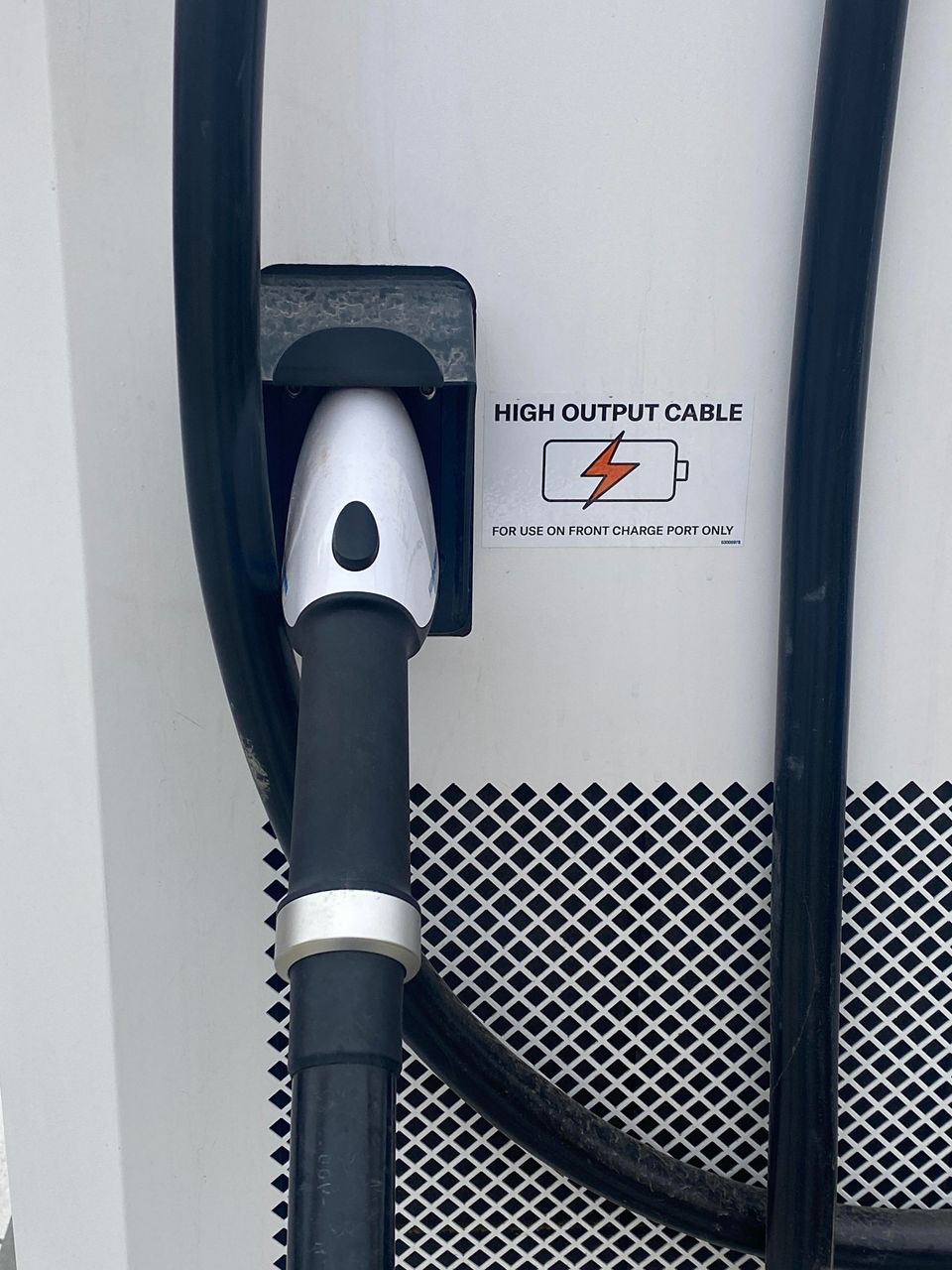
To support that transition to electric trucks, the California Energy Commission says the state will need about 160,000 heavy-duty chargers by 2035.
“This is the initial step toward that bigger goal that we have to meet,” said California Energy Commissioner Patty Monahan. “We are working right now on how we make sure that the grid is ready so that we can build out our infrastructure swiftly enough to meet our climate goals and meet the regulations that the Air Resources Board is setting.”



